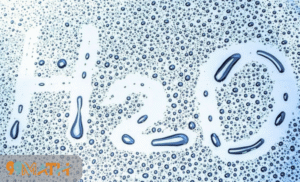This chemical notation HCOOCH2H2O may appear slightly cryptic at first blush, but scratch beneath this surface, and you’ll discover intriguing observations about two critical compounds: formate, a methylene group and water. Though this particular combination isn’t a known chemical formula commonly referred to in the literature, all three components of the process — formate (HCOO-), methylene (CH2) and water (H2O) — have established roles in chemistry and industrial applications.
This article will give you insightful information about what HCOOCH CH2 H2O is, how it works, and the practical applications of this product. It also covers these components’ physical, chemical and biological significance, integrating an understanding of their interaction and importance.
Profile Bio Table: HCOOCH CH2 H2O
| Attribute | Details |
|---|---|
| Name | HCOOCH CH2 H2O |
| Chemical Nature | Possibly a hydrate form of methyl formate or a related compound |
| Molecular Components | Formate (HCOO), Methylene group (CH2), Water (H2O) |
| Category | Organic compound / Hydrated intermediate |
| Appearance | Colorless to pale liquid or solid (varies by formulation) |
| State at Room Temp | Typically liquid or aqueous form |
| Uses | Organic synthesis, industrial applications, research |
| Safety Level | Handle with care; may be corrosive depending on concentration |
| Solubility | Soluble in water and some organic solvents |
| Reactivity | Reacts under certain pH or temperature conditions |
| Found In | Laboratories, research facilities, synthetic chemical processes |
| Related Compounds | Formic acid, methyl formate, formaldehyde |
Understanding HCOOCH CH2 H2O

HCOOCH2H2O” as the compound or a complex of formate HCOO- with CH2 and water. Formate is the anion form of formic acid (HCOOH), a carboxylic acid.
There is a great deal of interest in studying formic acid and its derivatives from biological and industrial points of view. Methylene suggests a larger organic molecule or intermediate, while water could be a hydration state and/or solvation in solution.
Chemists will often encounter molecules like this in the context of formate esters, formate hydrates, or intermediates in organic synthesis and metabolism.
Formic acid and formate: The basics
The first to isolate the compound by distilling ants (formica is Latin for ant), Formic acid is a naturally occurring compound in plants and insects. It has a strong odour and is acidic.
When formic acid loses a proton, it becomes the formate ion (HCOO-). This cation is indispensable in various biochemical reactions, notably in one-carbon metabolism where it contributes single carbon atoms for synthesizing DNA bases and amino acids.
Formate salts are commonly utilized in industry and agriculture. They could be used as preservatives, intermediate in synthesis, and as an environmentally friendly de-icing agent.
Contribution of the Methylene Group (CH2)
The methylene (CH2) group is one of the simplest units of organic chemistry. It serves as a bridge or spacer that connects regions within molecules.
In compounds such as methyl formate (HCOOCH3), a methyl group takes the place of the methylene; an ester is formed. An S4 intermediate or derivative with unusual reactivity and physical properties can be implied if a methylene unit is in a compound peroxide which contains formate and water.
The HCOOCH CH2 H2O (Hydration and Water Interaction) Model
Water is also crucial in chemistry and biology. When part of a chemical formula, as in HCOOCH2H2O, it may mean:
Example: A hydrate Water molecules are included in the crystal lattice to form the compound.
A species that is dissolved (in solution), in which the water molecules are attracted to the ions or molecules and influence solubility and reaction rates.
The melting points, solubility, stability, taste and other physical and chemical properties of the hydrates are disclosed in and used daily.
Mechanism: What happens in HCOOCH CH2 H2O?
And, though HCOOCH CH2 H2O is not a well-known product, understanding its likely chemistry according to its constituents is enlightening:
Formate is a nucleophile and can give rise to other reducing species.
The CH2 group may contribute to a bond or be in a reactive position for a subsequent chemical bond.
Water molecules also directly affect the system through hydrogen bonding, which alters the molecule’s conformation, solubility, and reaction rate.
In solution, these interactions give rise to the level of control within which the system can undergo esterification, hydrolysis, or any redox reactions, the latter being particularly important in synthetic and biological chemistry.
Formate Compounds in Industrial Applications
Compounds of the formate series and their hydrates are of wide use:
Horticulture: Formic acid is biocidal and is used, for example, to clean barns, whiten (remove colour) in feed, and remove dirt and drusen from the exterior of bee hives. They prevent spoilage organisms from acting by reducing the pH and ensuring high-quality feed for animals.
Chemical industry: Intermediates in producing textiles, leather, rubber, and pharmaceutics.
De-icers: Formate salts such as potassium formate are becoming increasingly popular as a greener alternative to chloride salts for de-icing.
Green solvents: Methyl formate and other formic acid esters represent environmentally friendly solvents because of their biodegradability and low toxicity.
The hydration state can also be a factor for the function of these compounds, which may be important in storage, manipulation, and reactivity.
Biological Relevance of Formate and Its Derivatives
Formate also has a metabolic function. It is used as a one-carbon donor in the folate cycle, essential for nucleotide synthesis, DNA repair, and methylation reactions.
Certain microorganisms utilize formate for energy in anaerobic respiration. Formate and its conjugate base, formic acid, participate in biosynthetic pathways, which makes them essential for life.
The water content in biological systems keeps the solubility and reactivity of formate sufficiently high to allow its practical use as a metabolic intermediate.
Physical Properties of Formate Oxyhydrates

Although precise physical data of HCOOCH CH2 H2O are not available, typical formate hydrates present similarities:
Appearance: Normally, it is in white or colourless crystalline solids.
Solubility: Forms hydrogen bonds causing it to be very soluble in water.
Stability: Stable at room temperature but can be reacted with strong acids or bases.
Smell: They are generally odourless or have a mild smell of acid.
These features dictate how these compounds are stored, transported and utilized in industry.
Safety Considerations
Formic acid and formate salts are handled with care:
- Formic acid is corrosive and may cause skin and eye irritation.
- Vapours may irritate the respiratory system.
- Appropriate personal protective equipment (PPE), including gloves, goggles , and ventilation, must be utilised.
Hydrates are generally less hazardous through the practice of general chemical safety.
Environmental Sustainability and Impact
Biodegradable formate salts are environmentally preferable in numerous uses. Utilizing them as de-icers also eliminates the chloride effluent addition to water bodies, which often accompanies conventional salt applications.
Direct formic acid synthesis from bio-renewable feedstock (such as biomass) is emerging and in line with Green Chemistry.
Regarding compounds such as HCOOCH CH2 H2O, the promise of sustainability is evident in their possible future in an eco-friendly industry.
Current Research and Innovations
Researchers are investigating formate derivatives for:
- Energy storage: Formate can be a hydrogen carrier in fuel cells.
- Catalysis: Formate catalysts move to boost reaction efficiency and selectivity.
- Medication, Healthcare: Formate esters are used in new medicines for improved delivery and stability.
These studies increase our knowledge of formate chemistry and broaden the application of these reagents.
READ MORE: 99math: The Interactive Math Game Revolutionizing Classrooms Worldwide
Summary HCOOCH CH2 H2O
Although HCOOCH CH2 H2O is less usual as an independent formula, it embodies formate chemistry, organic structure, and hydrational effects. The constituents are well-investigated species of paramount importance in the chemical, biological, and industrial sciences.
From food preservation to sustaining cellular life, formate and its hydrate structures remain highly relevant to diverse areas of science and industry. Understanding their principles and applications is crucial for researchers, manufacturers and environmental scientists.
The relevance of this compound comes not only from theoretical chemistry but also from the applied and societal benefit of the real world—what power of a basic chemical building block in human life!






